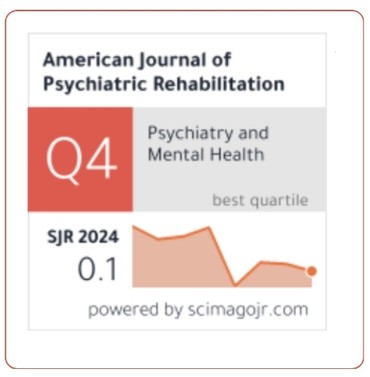Prevalence Of Common Clinical Conditions and Outcome in Pediatric Medical Intensive Care Unit in Kerala
DOI:
https://doi.org/10.69980/ajpr.v28i5.359Keywords:
Prevalence, Clinical conditions, pediatric medical intensive care unitAbstract
Background: The study aimed to assess the prevalence of common clinical conditions and the outcome of children admitted to the pediatric medical intensive care unit of a tertiary care centre in Kerala. Methods: A prospective observational study was conducted in the Pediatric medical Intensive care unit of a tertiary care centre over 3 months from January 2025 to March 2025. The data was analyzed using the Statistical Package for Social Sciences version 25. A chi-square test was used to test for the significance of the association; a p-value of less than 0.05 was considered significant. Results: A total of 226 of these patients met the inclusion criteria and were included in the study and analysed. Of these, children between 5-12 years (35.39%) accounted for the largest number, males overcounted females at 53.98%. Respiratory illnesses, neurological disorders, and hemato-oncologic conditions were the most common reasons for admission. Children who stayed in the intensive care unit for 2–7 days accounted for 43.36%. 12.38% of children needed invasive mechanical ventilation, and among them, 6 were undergoing tracheostomy. 13.27% of children had died, and 86.73% were transferred to the ward.
Significant associations were found between mortality and admission source, length of stay, renal replacement, and ionotrope support. Conclusions: The knowledge of common clinical conditions and outcomes of children admitted to the pediatric medical intensive care unit and the association between socio-demographic characteristics helped to plan certain nursing interventions to improve the outcome of the patients in the critical care area.
References
1. Fiser, D.H., 1992. Assessing the outcomes of pediatric conditions. The Journal of Pediatrics, 72, pp.92–95.
2. Bennett, D. and Bion, J., 2009. ABC of intensive care: Organization of intensive care. Intensive Care Medicine, 54, pp.38–41.
3. Saleem, M., Khurshid, A. and Wajdan, A., 2021. Clinical profile and outcome of the patients admitted in PICU in tertiary hospital. Professional Medical Journal, 28(4), pp.548–551.
4. Frankel, L.R. and DiCarlo, J.V., 2003. Pediatric intensive care. In: D. Bernstein and S.P. Shelov, eds. Pediatrics for Medical Students. 2nd ed. Philadelphia: Lippincott Williams & Wilkins, p.541.
5. 5.Pronovost, P.J., Dang, D., Dorman, T., Lipsett, P.A., Garrett, E. and Bass, E., 2001. Intensive care unit nurse staffing and the risk for complications after abdominal aortic surgery. Effective Clinical Practice, 4(5), pp.199–206.
6. NFHS-5, 2019–2021. National Family Health Survey (NFHS-5), Haryana Fact Sheet.
7. Balakrishnan, G., Aitchison, T., Hallworth, D. and Morton, N.S., 1992. Prospective evaluation of Pediatric Risk of Mortality (PRISM) score. Archives of Disease in Childhood, 67(2), pp.196–200.
8. Iyoha, A.B.I., Pooboni, S. and Vuppali, N.K.K., 2014. Morbidity pattern and outcome of patients admitted into a pediatric intensive care unit in India. Indian Journal of Clinical Medicine, 6(5), p.S13902.
9. Debbie, A.L. and Ericka, L.F., 2021. Transitions from short to long term outcomes in pediatric critical care: Considerations for clinical practice. Translational Paediatrics, 10(10
10. Dendis, G. and Awoke, N., 2023. Factors associated with the outcome of pediatric patients admitted to intensive care unit in resource-limited setup: A cross-sectional study. Pediatric Health, Medicine and Therapeutics, pp.71–79.
11. Shukla, V.V., Nimbalkar, S.M. and Phatak, A.G., 2014. Critical analysis of PIM2 score applicability in a tertiary care PICU in Western India. International Journal of Pediatrics, 83, pp.13–18.
12. Madaan, G., Bhardwaj, A.K., Sharma, P.D. and Dhanjal, G.S., 2014. Validity of PRISM score in prediction of mortality in Northern India pediatric intensive care unit. Indian Journal of Child Health, 1(3), pp.105–108.
13. Roshani, N., Keya, T. and Tullu, M.S., 2010. Performance of PRISM (Pediatric Risk of Mortality) score and PIM (Pediatric Index of Mortality) score in a tertiary care pediatric ICU. Indian Journal of Pediatrics, 77(3), pp.267–271.
14. Earan, S.K., Dhandapani, L., Arunagirinathan, A. and Kantamneni, S., 2016. Clinical spectrum and epidemiological profile of patients admitted in PICU at a tertiary care centre in South India. International Journal of Science Studies, 4(3), pp.187–191.
15. Jyothi, A.K. and Ankireddy, K., 2019. A study on clinical profile and outcome of patients in PICU (paediatric intensive care unit) at tertiary care unit. International Journal of Contemporary Pediatrics, 6(2), pp.757–760.
16. Haque, A. and Bano, S., 2009. Improving outcome in paediatric intensive care unit in academic hospital in Pakistan. Pakistan Journal of Medical Sciences, 25(4), pp.605–608.
17. Kapil, D. and Bagga, A., 1993. The profile and outcome of patients admitted to a pediatric intensive care unit. Indian Journal of Pediatrics, 60, pp.5–10.
18. Sahoo, B., Patnaik, S., Mishra, R. and Jain, M.K., 2017. Morbidity pattern and outcome of children admitted to a paediatric intensive care unit of Eastern India. International Journal of Contemporary Pediatrics, 4(2), p.486.
19. Bano, A., Haque, A. and Bano, S., 2009. Improving outcome in pediatric intensive care unit in academic hospital in Pakistan. Pakistan Journal of Medical Sciences, 25(4). [Internet].
20. Haftu, H., Hailu, T., Medhaniye, A. and Gtsadik, T., 2018. Assessment of pattern and treatment outcome of patients admitted to pediatric intensive care unit, Ayder Referral Hospital, Tigray, Ethiopia. BMC Research Notes, 11(1).
21. El Halal, M.G.d.S., Barbieri, E., Mombelli Filho, R., Trotta, E.d.A. and Carvalho, P.R.A., 2012. Admission source and mortality in a pediatric intensive care unit. Indian Journal of Critical Care Medicine, 16(2), pp.81–86.
22. Kapil, D. and Bagga, A., 1993. The profile and outcome of patients admitted to a pediatric intensive care unit. Indian Journal of Pediatrics, 60, pp.5–10.
23. Jenna, P.M., Wesley, A.G. and Coovadia, H.M., 1991. Admission patterns and outcomes in a paediatric intensive care unit in South Africa over a 25-year period (1971–1995). Intensive Care Medicine, 25(1), pp.88–94.
24. Nelson, L.P. and Gold, J.I., 2012. Posttraumatic stress disorder in children and their parents following admission to the pediatric intensive care unit: a review. Pediatric Critical Care Medicine, 13, pp.338–347.
25. Als, L.C., Nadel, S., Cooper, M., 2013. Neuropsychologic function three to six months following admission to the PICU with meningoencephalitis, sepsis, and other disorders: a prospective study of school-aged children. Critical Care Medicine, 41, pp.1094–1103.
26. Fink, E.L. and Tasker, R.C., 2019. Brain-related outcome measures in trials recruiting critically ill children. Current Opinion in Pediatrics, 31, pp.775–782.
27. Geense, W.W., van den Boogaard, M., van der Hoeven, J.G., 2019. Nonpharmacologic interventions to prevent or mitigate adverse long-term outcomes among ICU survivors: a systematic review and meta-analysis. Critical Care Medicine, 47, pp.1607–1618.
28. Lopes-Júnior, L.C., Rosa, M.A.D.R.P. and Lima, R.A.G., 2018. Psychological and psychiatric outcomes following PICU admission: a systematic review of cohort studies. Pediatric Critical Care Medicine, 19, pp.e58–e67.
29. Panesar, R., Polikoff, L.A., Harris, D., 2014. Characteristics and outcomes of pediatric rapid response teams before and after mandatory triggering by an elevated Pediatric Early Warning System (PEWS) score. Hospital Pediatrics, 4, pp.135–140.
30. Huh, J.W., Lim, C.M., Koh, Y., 2014. Activation of a medical emergency team using an electronic medical recording-based screening system. Critical Care Medicine, 42, pp.801–808.
31. Bellomo, R., Ackerman, M., Bailey, M., 2012. A controlled trial of electronic automated advisory vital signs monitoring in general hospital wards. Critical Care Medicine, 40, pp.2349–2361.
32. Seferian, E.G., Carson, S.S., Pohlman, A. and Hall, J., 2001. Comparison of resource utilization and outcome between pediatric and adult intensive care unit patients. Pediatric Critical Care Medicine, 2, pp.2–8.
33. Brady, A.R., Harrison, D., Black, S., Jones, S., Rowan, K., Pearson, G. et al., 2006. Assessment and optimization of mortality prediction tools for admissions to pediatric intensive care in the United Kingdom. Pediatrics, 117, pp.e733–e742.
34. Marcin, J.P. and Pollack, M.M., 2000. Review of the methodologies and applications of scoring systems in neonatal and pediatric intensive care. Pediatric Critical Care Medicine, 1, pp.20–27.
35. Ruttimann, U.E., Patel, K.M. and Pollack, M.M., 2000. Relevance of diagnostic diversity and patient volumes for quality and length of stay in pediatric intensive care units. Pediatric Critical Care Medicine, 1, pp.133–139.
Downloads
Published
Issue
Section
License
Copyright (c) 2025 American Journal of Psychiatric Rehabilitation

This work is licensed under a Creative Commons Attribution 4.0 International License.
This is an Open Access article distributed under the terms of the Creative Commons Attribution 4.0 International License permitting all use, distribution, and reproduction in any medium, provided the work is properly cited.









